
We kindly inform you that, as long as the subject affiliation of our 300.000+ articles is in progress, you might get unsufficient or no results on your third level or second level search. In this case, please broaden your search criteria.

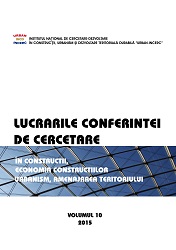
Providing of social housing is a real problem for millions of families in the European Union and in the world, most intense being felt in the states most affected by the current economic crisis. Providing social housing in Austria had substantial reforms in 2009, when the state has withdrawn the financing and the formerly budget dedicated to promoting housing has been integrated into the general budget of the federal provinces. The social housing stock represents around 24% of the housing stock of the country, of which 60% is owned by municipalities and public companies. Despite the economic crisis Austria has maintained extensive subsidies and it has granted allowances for housing, mainly for rent regulated and non-market housing.
More...
Bucharest, as the majority of big cities, but more than many of them, bears the negative consequences of a very high motorization rate and of an irrepressible traffic, generated on and by its territory of influence. The city’s polarizing force express itself through commuting pendulum flows from and towards its periurban settlements, who are spatially and functionally related to it. In a major share, the commuting trips are made by cars that enter, travel and park within Bucharest, widening the negative impacts of its internal traffic and fleet of cars. The best solution to mitigate traffic congestions, reduce pollution, enhance road safety, release and rehabilitate public space is to provide an efficient regional transportation system at the scale of the quotidian mobility territory (working catchment area delimitating the functional urban area) and the implementation of a coherent mobility policy through consensual packages of measures. This type of complex and expensive transportation supply can be achievable only at a long term horizon, whilst solutions adequate to the current context must be implemented as soon as possible. The paper addresses the solution of organizing "intermodal gates” for the city, as effective equipements for modal report, providing good conditions for fast, convenient and comfortable transfer from car to public transportation, in particular to the subway. Priority locations for such intermodal hubs are those at the entries within Bucharest of A1, A2, A3 motorways, from which large motorized flows are discharging on the internal road framework of the city, already overcharged. The majority of those flows is of commuting trips, which have high potential for modal report towards public, collective transportation. The "Intermodal Gates" are a transfer hubs system with high potential for leading, within Bucharest city, to the mitigation of the traffic originating from its territory of influence. For this “carrot” potential to be efficiently harnessed, “stick” measures also must be taken to limit, condition and make expensive the access and parking in the city, mainly in its center. The work is based on the author’s research undertaken within the project SAFENET - Research on estimation and enhancement of intrinsic safety performances for urban traffic networks, PN-II-PT-PCC A-2011-3.2-1439 conducted through the “Partnership in priority areas” program - PNII, PCCA Tip 2, conducted between 2012-2016 with the support of ANCSI CNDI – UEFISCDI, and addresses proposals of the author during the preparation of the Sustainable Urban Mobility Plan for Bucharest-Ilfov region, 2014-2015.
More...
Accessibility is a key concept in regional development, with numerous ties to territorial cohesion and polycentricity. Moreover, it also exhibits a geo-strategic function, anchored in the international relationships between countries and continents. The article reviews several case studies, placing analyses of the Romanian accessibility in a broader context. The results show that regional development, overall EU connectivity and possible transit fluxes are prevented by the configuration or lack of communication routes. Increasing the accessibility of regions must be a priority of governments, regardless of political opinions. It is expected that the transition of economy to post-carbon era or other models – green economy, knowledge-based economy etc.) – to result into the emergence of new poles and axes of development, and ensure transport sustainability.
More...


Ky artikull, shqyrton mënyrën se si pakicat etnike dhe gjuhësore, kërkojnë të drejtojnë çështjet e tyre të interesit, brenda kontekstit të strukturave politike dhe qeveritare të vendit. Artikulli, shqyrton marrëdhënien midis ndryshimeve në gjendjen e pakicës dhe ndryshimeve në mjetet specifike të përdorura nga këto grupe, kur kërkojnë drejtimin apo trajtimin e problemeve të tyre. Për këtë arsye, ne do të shohim dy vende të rëndësishme të Europës lindore Rumaninë dhe Ukrainën. Të dy vendet kanë pakica të rëndësishme etnike dhe gjuhësore. Megjithatë, gjendjet e ndryshme të secilit prej këtyre grupeve etnike, kanë prodhuar mjete mjaft të ndryshme me anë të të cilave çështjet etnike dhe gjuhësore janë sjellë në vëmendjen politike dhe qeveritare.
More...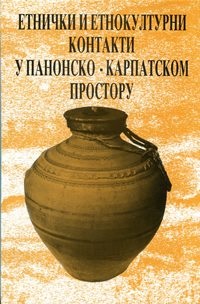

Nowadays, cities also can be “smart”. More and more cities use the label “smart” – in Hungary as well. Is it a rational decision for cities full with opportunities or, if it is a necessity, however, is it a new trend that must be followed without any substance? Besides this dilemma, the study also focuses on the regulation of the smart city concept. Regarding the growing number of smart cities and the simultaneous regulation gap, the question is whether we need to regulate smart cities? If we do, at which governmental level and what kind of substance, and, if we do not, what are the reasons?The urban development is the theoretical framework of the study. After the definition of smart city, the study focuses on the content of smart city, systematizing its features on the basis of the relevant regulations and literature. As the result of my research, the risks of regulation as well as further deficiencies and contradictions will be demonstrated.
More...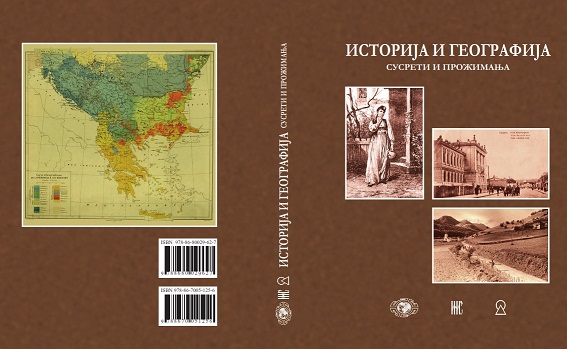
The research results presented in the paper refer to the territorial, demographic and functional organization of Negotinska krajina which is, in many ways, specific area in north-eastern Serbia. The researched area is a complex territorial system according to its position, economical and demographic areal and functional development. Physical and geographical basis is no longer a limiting factor of the inner structure and functional differentiation of Krajina. The effect the basis has on the development of Krajina is double: direct and indirect. The direct effect that the natural elements (configuration, climate, water, biogeographical and pedological features) have on city and village location can be seen in the possibility of their territorial and functional spreading. The indirect effects are realized through influencing population position and economical resources and their evaluation.
More...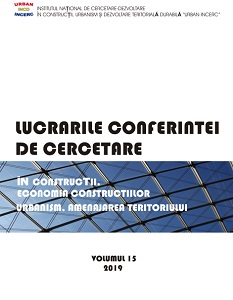
Spatial sustainability implies an integration of economic, social, environmental and cultural issues taking into account their territorial particularities. Through the nature of their formation, as part of multi-disciplinary teams, geographers are called to be part of the planning process. Furthermore, the law entitles them to coordinate specific plans. The paper examines in detail the involvement of geographers in the elaboration and coordination of urban and spatial plans, with a special emphasis on their spatial distribution and potential area of influence. The results of geostatistical analyses indicate that the distribution and influence of geographers are sparse and uneven, concentrating around large university centers.
More...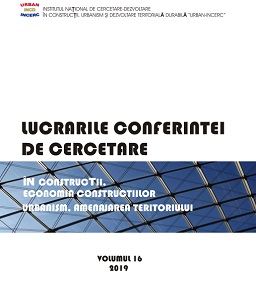
This paper presents a guided tour of significant natural and cultural landscapes along the Danube from springs to the sea, including those in Germany, Austria, Slovakia, Hungary, Romania and Bulgaria. A cross view to Serbia is provided. Methods included field work and photographic survey, literature research not only in technical papers but also in works of art. The paper highlights which are the UNESCO World Heritage Sites and which is otherwise the protection status of the landscapes. In conclusion a variety of landscape typologies were analysed and set in the context of the definition of the term.
More...
The article deals with the problem of aging of the population of the Republic of Moldova. The structure and dynamics of the population of the country by main age groups as well as territorially are analyzed. The problem of population aging is highlighted in the Northern region of the republic, as the region where the highest rate of population aging is observed. The indicator analyzes the demographic load in the Republic of Moldova, including the Northern region.
More...
Systems emerge and develop according to objective laws that are uncovered by exploring massive amounts of information. In the field of invention, the possibilities for exploring anything new are considered and analysed with simple methods and with minimal errors. This is based on the objective laws of system development and contradiction (the improvement in one attribute irrefutably leads to deterioration in another). In terms of its methodology and theoretical-scientific underpinnings, the present paper draws on the comparative approach of works by contemporary domestic and foreign economists, on publications by specialists in the field, on technical and economic documentation, comments, periodicals and scientific articles.
More...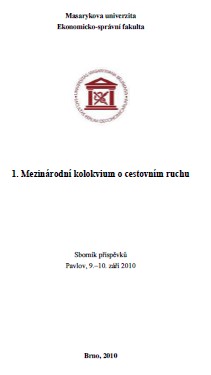
Cieľom nášho príspevku je predstaviť potenciál územia Slovenska pre jeden z tradičných spôsobov trávenia voľného času na území bývalého Československa a významnú súčasť domáceho cestovného ruchu, ktorou je druhé bývanie. Príspevok sa venuje priestorovému rozmiestneniu objektov druhého bývania a vyčleneniu potenciálne vhodných oblastí pre druhé bývanie, s dôrazom na chalupárenie. Hoci si uvedomujeme zložitosť problematiky a nedokonalosť použitej metódy vyčlenenia tohto typu objektov individuálnej rekreácie, pri analýze vychádzame z údajov o domovom fonde, získaných zo Sčítania obyvateľov, domov a bytov v roku 2001, pričom pracujeme predovšetkým s kategóriou neobývané domy v jednotlivých obciach Slovenska. Okrem existencie samotných objektov do skúmanej problematiky vstupuje aj ďalší dôležitý aspekt druhého bývania, a tým je dostupnosť potenciálnych cieľových oblastí zo zdrojových oblastí rekreantov, ktorými sú predovšetkým obyvatelia väčších mestských sídiel. V neposlednom rade nemožno opomenúť aj ďalšie faktory rozvoja druhého bývania v ťažiskových oblastiach, ktorými sú najmä prírodné predpoklady, ale tiež možnosti rekreačných aktivít v oblastiach s koncentráciou objektov druhého bývania.
More...
The paper focuses on regional and geographic features of pro-poor growth in African countries. The concept of pro-poor growth interconnects and examines mutual relationships between income growth, income poverty and income inequality. Using the World Bank’s income data, we calculate and interpret indicators of pro-poor growth for individual African countries. Then we analyze the results in terms of African regionalization and we investigate possible associations between pro-poor growth categories and selected geographic factors such as location, population size or population density. We show that higher pro-poorness of growth is typical for countries of Northern and Western Africa. The results also indicate that some of the geographic factors are significantly associated with propoor growth across African countries.
More...
Within the development of new regional geography, the role of human geographic research in the study of regions is emphasized. Regional uniqueness, a consciousness of belonging to a particular region and regional identity also play an important role in the definition of regions. However, physical geography disciplines, e.g. geomorphology, can also contribute to the knowledge of these aspects with regard to the definition of regions. Currently, within the framework of geomorphology, attention is paid to the diversity of anthropogenic landforms. The knowledge and evaluation of these anthropogenic landforms, which are an important part of the historical elements of the landscape and are also referred to as cultural artefacts of the landscape, enables to supplement the cultural-historical values of the region and to specify the cultural identity of the region. On the example of sites – Staré Hradisko and Hostýn – we will present the specifics of secondary geodiversity with respect to the cultural identity of the sites.
More...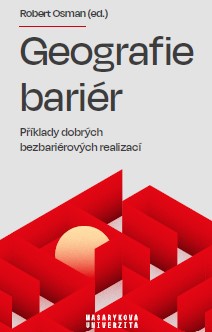
This chapter offers a Czech introduction to a subdiscipline of social geography—disability geography, its development and main research topics. It also grounds the whole book and our project in a broader thinking about the relationship between space and the body. In between the general beginning towards a concrete ending of this book, it turns our attention from the study of disability to space and shows how space participates on social disadvantage and this disadvantage is inscribed in space. The chapter focuses on the interactions of diverse bodies with diverse space and notices, what these interactions enable and what they disable, and how certain spaces participate in dis/abling and enabling of certain bodies. The question resonating through the whole book is “how space participates on disadvantaging of our bodies”, or “how diversity of our bodies translates into the form of space”? The chapter is divided into two parts; the first one discusses geography of disability and tries to show how discussions within disability studies are transferred with some delay into disability geography, where they interact with the research on space. The second part is devoted to three selected examples of space experience: the experience of people with physical impairment, the experience of people with sight impairment and the experience of „d/Deaf“ people. Each of the examples discusses two or three broader topics that have represented or might represent key research streams of the respective spatial experience.
More...
The fourth chapter outlines the context and methods for designing accessible, usable, and useful urban services. Digital services are introduced as an integral part of city services, connecting urban infrastructure with the services of a city (an example of digital urban service in the context of removing barriers can be accessibility maps). At the beginning, methods that help municipalities to design better services are presented, focusing on the digital aspect and being part of so-called human-centered design or design thinking. Special attention is devoted to dual diamond method, characterized by combination of methods to be able to better determine and analyze the needs of potential users, and to create and test the developing design. Involvement of future users is of key importance not only in the preparatory phase, but also through participative design and user-oriented evaluation. As the methods are very broad, it is necessary to include representatives of various skills and multidisciplinary perspectives. The chapter also offers three criteria for evaluating good public digital services— accessibility, usability, and usefulness. Each of these concepts is discussed in more
More...
The fifth chapter discusses policies and planning of accessible public space. The text works with the approaches of universal design and tactical urbanism and applies them to concrete practical examples. It demonstrates the limits of various space designs and introduces their possible complementarity with the aim to give an overview of practical examples of municipal efforts to make public space accessible. The data collected via semi-structured interviews and the analysis of conceptional and strategic municipal documents in the Czech Republic identified cities (Brno, Olomouc, Pardubice a Praha), which have already institutionalized the agenda of barrier-free space. These cities can be placed on a timescale corresponding to subsequent phases of this institutionalization, with Olomouc being at front (after 18 years of experience with accessibility policies) and Brno, which started to remove barriers systematically only in 2017, at the opposite side. Urban municipalities use diverse tools and define their goals for in strategies and conceptions that serve as guides for multiple working groups. Some of these groups have their own budgets, in which European and state support can be used. The working groups usually belong under one of three types based on their activities: the actual barrier-removing work, conceptional and methodic work and educational work. Most visible results are usually found in public transport (public transport stops, crossings, lowering sidewalk and traffic island curbs, etc.). Strategic and systematic effort in removing barriers, which has been carried out by these four cities, can undoubtedly be an inspiration for other municipalities.
More...